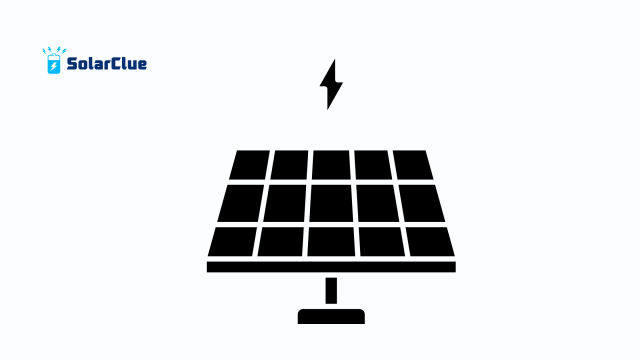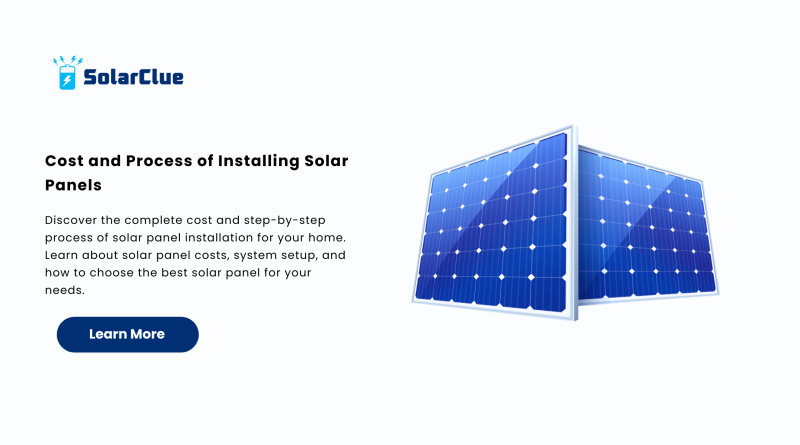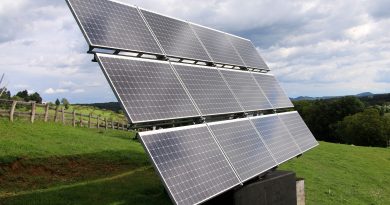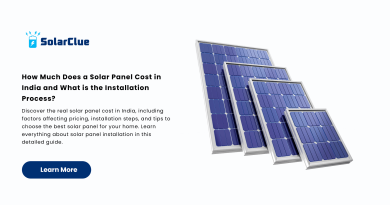Cost and Process of Installing Solar Panels
With increasing electricity bills and growing environmental concerns, more homeowners in India are switching to solar power systems. But one common question remains: What is the actual cost and process of installing solar panels? This blog explains everything you need to know—from the expenses involved to the entire installation journey. Whether you’re exploring solar panels for home use or want to understand the value behind this investment, this guide will help you make informed decisions about harnessing solar energy.
Table of Contents
- 1 What is a Solar Panel and Why Go Solar?
- 2 How Much Do Solar Panels Cost?
- 3 Additional Costs Involved
- 4 Government Subsidies and Incentives
- 5 Step-by-Step Process of Installing Solar Panels
- 6 How to Choose the Best Solar Panel?
- 7 Solar Panels for Home: Is It Worth It?
- 8 Maintenance Requirements
- 9 Benefits of Installing Solar Panels
- 10 FAQs
What is a Solar Panel and Why Go Solar?
Solar panels are devices that convert sunlight into electricity using photovoltaic cells. Installing a solar panel for home not only helps you cut down on energy costs but also contributes to a cleaner, sustainable environment. With India promoting renewable energy, solar is now more affordable than ever.
How Much Do Solar Panels Cost?
The solar panel cost varies depending on several factors such as panel type, brand, capacity, and system size. Here’s a breakdown:
| Type of Solar Panel | Cost per Watt (INR) | Approximate Price for 3kW System |
|---|---|---|
| Polycrystalline | ₹25–₹35 | ₹75,000 – ₹1,05,000 |
| Monocrystalline | ₹35–₹45 | ₹1,05,000 – ₹1,35,000 |
| Bifacial | ₹45–₹55 | ₹1,35,000 – ₹1,65,000 |
| Note: These costs are panel-only. Installation, inverter, battery, and other components are additional. |
Additional Costs Involved
-
Inverter Cost: ₹15,000 – ₹50,000 (based on capacity and brand)
-
Structure & Mounting: ₹10,000 – ₹20,000
-
Wiring & Safety Equipment: ₹5,000 – ₹10,000
-
Installation Charges: ₹7,000 – ₹15,000
-
Battery (if off-grid): ₹20,000 – ₹70,000
The complete cost of a solar panel installation for a 3kW system could range between ₹1.5 lakh to ₹2.5 lakh.
Government Subsidies and Incentives
The Indian government offers subsidies of up to 40% for residential solar power systems under the PM Surya Ghar Muft Bijli Yojana. This significantly reduces your upfront cost. You can apply for subsidies through the National Portal for Rooftop Solar.
Step-by-Step Process of Installing Solar Panels
1. Site Assessment
A solar expert will visit your location to assess the rooftop area, orientation, sunlight availability, and your energy needs.
2. System Design
Based on your consumption pattern, a customized solar power system is designed—choosing the right capacity, components, and layout.
3. Quotation & Approval
You receive a detailed quote including material, labor, and taxes. After approval, the process begins.
4. Government Application
The installer helps you with government documentation and subsidy application (if applicable).
5. Installation
The solar panel installation team mounts the structure, fixes panels, connects the inverter, and ensures all wiring and safety checks are completed.
6. Net Metering Setup
A bi-directional meter is installed to track both electricity used and excess electricity sent back to the grid.
7. Testing & Commissioning
The system is tested for safety, performance, and finally commissioned for regular use.

How to Choose the Best Solar Panel?
To select the best solar panel, consider:
-
Efficiency: Higher efficiency panels generate more electricity in limited space.
-
Warranty: Reputed brands offer 25-year performance warranties.
-
Brand Reputation: Check customer reviews and after-sales service.
-
Certification: Ensure panels are MNRE approved and meet BIS standards.
-
Budget: Balance between cost and long-term value.
Popular brands in India include Tata Power Solar, Waaree, Vikram Solar, and Adani Solar.
Solar Panels for Home: Is It Worth It?
Yes, absolutely! A typical solar panel for home pays back its cost in 4–6 years. Post that, the electricity it generates is practically free for 15–20 years. Imagine slashing your electricity bill by 80% every month—it’s not just a green choice, it’s a smart one.
Maintenance Requirements
Solar power systems require minimal maintenance. Cleaning the panels every 15–30 days and conducting an annual check-up is enough. Most problems arise due to dust, bird droppings, or faulty wiring, which are easily fixable.
Benefits of Installing Solar Panels
-
Save Big on Bills: Reduces your electricity expenses dramatically.
-
Eco-Friendly: Zero emissions and promotes clean energy.
-
Energy Independence: Be less reliant on the grid.
-
Increased Property Value: Homes with solar systems are more attractive to buyers.
-
Low Maintenance: Hassle-free upkeep.
-
Long-Term Investment: Get 25+ years of benefit from a one-time setup.
FAQs
Q1. What is the lifespan of a solar panel?
Most solar panels have a lifespan of 25 years, with performance warranties backing them.
Q2. Can I install solar panels myself?
Technically yes, but it is recommended to hire professionals to ensure safety and compliance with local laws.
Q3. How long does installation take?
Typically 2–5 days depending on system size and weather.
Q4. Is battery backup necessary?
Only if you’re opting for an off-grid setup. For grid-connected systems, net metering handles excess power.
Q5. Can I upgrade my solar system later?
Yes, systems are modular. You can add more panels or batteries later based on your need.
Switching to solar isn’t just an environmental decision—it’s a financial upgrade. From evaluating solar panels cost to understanding the solar panel installation process, you’re now equipped to take the next step. Whether it’s your home, apartment, or business, solar is the future—and the future is bright.
Ready to power your life with the sun? Explore the best solar options and personalized solutions at SolarClue.com and dive into our expert articles at blog.SolarClue.com to start your journey today!




